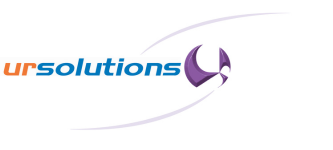- Privacy Policy
- Our Service Commitment
- Red Hat Delivers Accessible, Open Source Generative AI Innovation with Red Hat Enterprise Linux AI
- Is Red Hat OpenShift Container Platform Virtualization the Best Alternative to VMware Amid Rising Costs?
- Top 10 Stories About Compute Engines, Linux of 2024 (So Far) - ITPro Today
UR Solutions News
Open-source News
LE9, Canonical's Profits, Steam Deck, & Loongson 3A5000 Made For An Exciting July
July was a pretty damn exciting summer month amid the pandemic thanks to many interesting Linux software and hardware announcements...
SDL 2.0.16 Is On The Way With Better Wayland Support, Improved PipeWire Integration
SDL 2.0.16 is being prepared for release as the successor to SDL 2.0.14. Particularly for Linux users this SDL 2.0.16 update is significant with some key enhancements for this library that is common to multi-platform games and part of the Steam runtime...
Lutris 0.5.9 Beta Released With Epic Games Store Support, DXVK-NVAPI/DLSS, Gamescope
Lutris 0.5.9-beta1 is out this Sunday as a rather significant update to this open-source Linux game manager. With this new version there are many new features for this centralized game launcher...
Use the Linux terminal to see what files are on your computer
To list files on a computer with a graphical interface, you usually open a file manager (Files on Linux, Finder on MacOS, Windows Explorer on Windows), and look at the files.
To list files in a terminal, you use the ls command to list all files in the current directory. The pwd commands tells you what directory you're currently in.
read more
Install Windows Subsystem for Linux with a single command - Ghacks Technology News
Install Windows Subsystem for Linux with a single command Ghacks Technology News
7 Tips to Customize the Look of Your Linux Terminal - MUO - MakeUseOf
7 Tips to Customize the Look of Your Linux Terminal MUO - MakeUseOf
Which Linux Desktop Should You Use? KDE vs. GNOME - MUO - MakeUseOf
Which Linux Desktop Should You Use? KDE vs. GNOME MUO - MakeUseOf
LemonDuck Shows Malware Evolution, Endangering Linux and Microsoft - Illinoisnewstoday.com
LemonDuck Shows Malware Evolution, Endangering Linux and Microsoft Illinoisnewstoday.com
Linux Changes Pipe Behavior After Breaking Problematic Android Apps On Recent Kernels
At the end of 2019 a rework to the Linux kernel's pipe code saw some of its logic reworked to only wake up readers if needed and avoid a possible thundering herd problem. But it turns out some Android libraries abused the functionality and this has led to broken Android applications when moving to recent kernels. While the user-space software is in the wrong, the kernel is sticking to its policy of not breaking user-space and as such Linus Torvalds has changed the code's behavior for Linux 5.14 and to be back-ported to prior stable kernels...
Instructions: Cut videos with Kdenlive on Linux and Windows - Market Research Telecast
Instructions: Cut videos with Kdenlive on Linux and Windows Market Research Telecast
The New NTFS Driver Looks Like It Will Finally Be Ready With Linux 5.15
It's looking like the new NTFS file-system kernel driver developed by Paragon Software and over the past year revised more than two dozen times could be ready for mainlining in the kernel in about one month's time when the Linux 5.15 merge window opens. Everything is finally aligning and looking like the code is in good enough shape for its initial merging though not necessarily replacing the existing NTFS driver at this point...
Linux 5.14 Drops Old DEC Alpha-Specific Binary Loader Used For x86 Binary Emulation
As a weekend blast from the past, the Linux 5.14 kernel saw some Alpha CPU architecture updates -- including various fixes and the removal of an Alpha-specific binary loader for running a decades dated x86 software emulator...
The 10 Best Websites to Run Linux in a Web Browser - MUO - MakeUseOf
The 10 Best Websites to Run Linux in a Web Browser MUO - MakeUseOf
